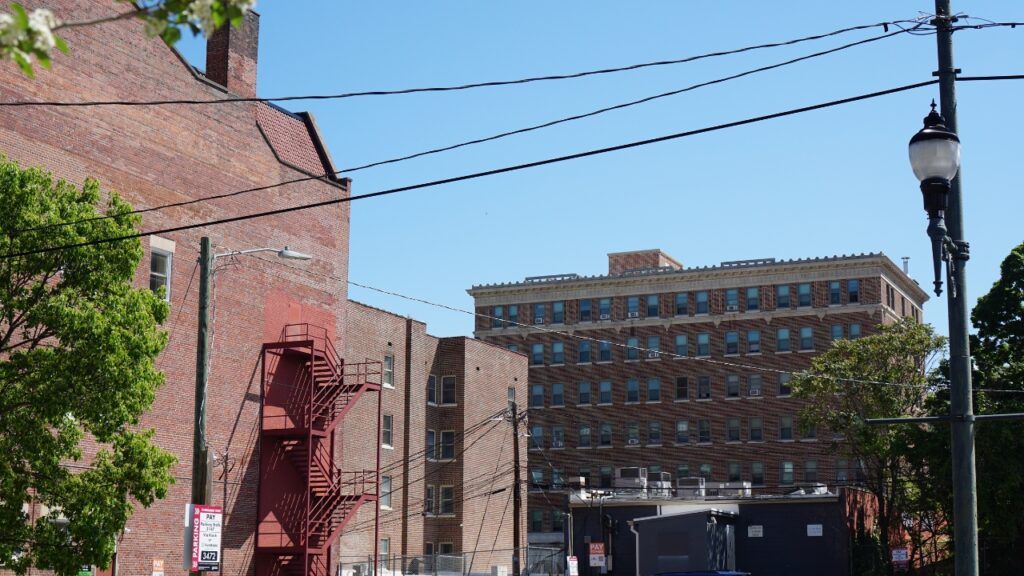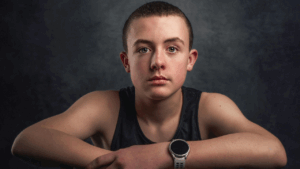When your teenager is struggling with anxiety, depression, behavioral challenges, or trauma, understanding what happens in therapy can help ease both your concerns and theirs. Cognitive Behavioral Therapy (CBT) stands as one of the most researched and effective approaches for treating adolescent mental health issues. What does it actually look like in practice, especially within a residential setting like BlueRock?
What Is CBT?
Cognitive Behavioral Therapy is a structured, goal-oriented form of psychotherapy that focuses on the connection between thoughts, feelings, and behaviors. Developed by psychiatrist Aaron Beck in the 1960s, CBT operates on a straightforward premise: the way we think about situations influences how we feel, and how we feel influences how we behave.
Unlike some forms of therapy that explore past experiences extensively, CBT primarily focuses on present challenges and developing practical skills to address them. This makes it particularly well-suited for adolescents, who often benefit from concrete tools they can apply immediately to their daily struggles.
Think of it this way: If your teen believes “I’m terrible at everything” (thought), they’ll likely feel discouraged or anxious (feeling), which might lead them to avoid trying new things or give up quickly when challenges arise (behavior). CBT helps teens identify these thought patterns, examine their accuracy, and develop more balanced perspectives that lead to healthier emotional responses and more adaptive behaviors.
The Core Components of CBT
Effective CBT with teenagers involves several key elements that work together to create lasting change:
Thought Identification and Awareness
The first step involves helping teens recognize their automatic thoughts—those immediate, often unconscious reactions we all have to situations. For adolescents, these might include thoughts like:
- “Everyone thinks I’m weird”
- “If I try and fail, it proves I’m worthless”
- “Something terrible will definitely happen”
- “Nobody understands me”
At BlueRock’s clinical program, therapists work with teens to develop awareness of these thought patterns through journaling, thought records, and reflective conversations. This awareness is crucial because you can’t change patterns you don’t notice.
Cognitive Restructuring
Once teens can identify unhelpful thoughts, they learn to challenge and reframe them. This doesn’t mean forcing “positive thinking” or denying real problems. Instead, cognitive restructuring teaches adolescents to:
- Examine evidence for and against their thoughts
- Consider alternative explanations for situations
- Distinguish between facts and interpretations
- Develop more balanced, realistic perspectives
For example, a teen thinking “I have no friends” might work with their therapist to recognize that having two close friends contradicts the thought of having “no” friends. The more accurate thought—”I wish I had more friends, but I do have two people who care about me”—feels different emotionally and leads to different behavioral choices.
Behavioral Activation and Experimentation
CBT is equally focused on changing behaviors. Therapists help teens test their assumptions through behavioral experiments and gradually face situations they’ve been avoiding.
If a teen believes “I’ll embarrass myself if I speak up in group,” their therapist might help them start with small, low-risk contributions and gradually build up to fuller participation. Each successful experience provides evidence against their fearful predictions and builds confidence.

Skill Building
CBT teaches practical skills that teens can use throughout their lives:
- Problem-solving strategies
- Emotional regulation techniques
- Communication skills
- Relaxation and grounding exercises
- Planning and goal-setting methods
How CBT Is Adapted for Adolescents
Working with teenagers requires specific modifications to standard CBT approaches. Adolescents aren’t just small adults. Their developmental stage requires therapists to adapt their methods thoughtfully.
Making It Developmentally Appropriate
Effective CBT for teens accounts for where adolescents are developmentally:
Abstract thinking is still developing: While some teens can engage with complex cognitive concepts, others need more concrete examples and simpler language. Therapists gauge each teen’s cognitive development and adjust accordingly.
Identity formation is central: Adolescence is fundamentally about answering “Who am I?” CBT with teens often explores how their thoughts and beliefs shape their developing sense of identity.
Peer relationships matter enormously: Teen-focused CBT places significant emphasis on social situations, peer relationships, and social anxiety—issues that are absolutely central to adolescent wellbeing.
Autonomy is crucial: Teenagers are wired to push for independence. Effective therapists collaborate with teens as partners rather than authority figures, giving them choices and control over their treatment goals.
Building the Therapeutic Relationship First
With adolescents especially, the therapeutic relationship must be established before meaningful CBT work can happen. Teens won’t engage with thought records and behavioral experiments if they don’t trust their therapist.
This is why BlueRock emphasizes a relationship-based model where trust forms the foundation of all therapeutic progress. At BlueRock, CBT doesn’t always happen in a sterile office. It might occur while fishing at our campus pond, walking mountain trails, or shooting hoops. These naturalistic settings help teens relax and open up in ways they might not in a traditional therapy room.
Using Creative and Experiential Methods
While traditional CBT involves worksheets and thought records, working with teens often requires more creative approaches:
- Using art, music, or metaphor to explore thoughts and feelings
- Role-playing difficult conversations or situations
- Incorporating movement and outdoor activities
- Using technology and apps that appeal to digital natives
- Drawing thought patterns or creating visual representations of cognitive distortions
At BlueRock, our experiential approach means CBT principles might be taught through a ropes course experience that challenges distorted thinking about capability, or through an outdoor adventure that provides opportunities to practice distress tolerance skills in real-time.
Specific Applications: How CBT Addresses Common Teen Challenges
CBT’s versatility makes it effective for a wide range of adolescent mental health concerns. Here’s how it’s applied to specific issues commonly seen in residential treatment settings:
Anxiety Disorders
For teens with anxiety, CBT focuses on identifying catastrophic thinking patterns and facing feared situations gradually. A teen with social anxiety might learn that their thoughts (“Everyone will judge me”) are predictions, not facts, and then test these predictions through carefully planned exposures.

Techniques particularly helpful for anxious teens include:
- Identifying and challenging anxious thoughts
- Learning the difference between possible and probable outcomes
- Gradually confronting avoided situations (exposure therapy)
- Developing relaxation and grounding skills
- Creating anxiety hierarchies to tackle fears systematically
Depression
When working with depressed adolescents, CBT addresses the negative thought patterns that both result from and contribute to depression. These often include negative views of themselves, their world, and their future.
CBT for teen depression emphasizes:
- Behavioral activation to counter withdrawal and isolation
- Challenging self-critical thoughts and developing self-compassion
- Scheduling positive activities even when motivation is low
- Problem-solving current life difficulties
- Building social connections and support
Behavioral Issues and Anger Management
For teens displaying oppositional behavior or anger problems, CBT helps identify the thoughts that trigger intense emotional reactions. A teen might learn they’re interpreting neutral situations as deliberately disrespectful, which triggers anger and aggressive responses.
Work in this area focuses on:
- Recognizing thinking errors that fuel anger (like mind-reading or personalizing)
- Developing perspective-taking skills
- Learning to pause between trigger and response
- Building communication skills for expressing needs appropriately
- Practicing problem-solving instead of reacting impulsively
Trauma-Related Symptoms
While Trauma-Focused Cognitive Behavioral Therapy (TF-CBT) is a specialized adaptation we’ll discuss separately, standard CBT also helps teens process difficult experiences by addressing how trauma has shaped their beliefs about themselves, others, and the world.
BlueRock’s clinical team is trained in evidence-based trauma treatment including TF-CBT, recognizing that many teens in residential care have experienced trauma that requires specialized intervention.
Trauma-Focused CBT: A Specialized Approach
Trauma-Focused Cognitive Behavioral Therapy (TF-CBT) deserves special attention as it’s specifically designed for children and adolescents who have experienced trauma. Developed by Drs. Cohen, Mannarino, and Deblinger, TF-CBT combines standard CBT techniques with trauma-sensitive components.
The TF-CBT Components
TF-CBT follows a structured progression typically remembered by the acronym PRACTICE:
Psychoeducation: Teens and families learn about trauma and its effects, normalizing reactions and building hope for recovery.
Relaxation skills: Teens learn practical techniques for managing anxiety and physiological arousal associated with trauma reminders.
Affective regulation: Adolescents develop skills to identify, express, and manage difficult emotions in healthy ways.
Cognitive processing: The core CBT component where teens identify and challenge trauma-related thoughts and beliefs.
Trauma narrative: Teens gradually tell their trauma story in a safe, structured way, which helps them process the experience and reduce its emotional power.
In vivo exposure: When appropriate, teens gradually approach safe trauma reminders they’ve been avoiding.
Conjoint sessions: Parents and teens come together to discuss the trauma and strengthen family communication.
Enhancing safety: Teens develop skills and plans to maximize their safety and cope with future stressors.
Why TF-CBT Is Effective for Teens
TF-CBT recognizes that trauma often fundamentally alters how teens think about themselves and the world. A teen who experienced abuse might believe “I’m damaged,” “It was my fault,” or “No one can be trusted.” These beliefs profoundly affect their emotional functioning and relationships.
Through the structured TF-CBT process, teens learn that:
- Their trauma reactions are normal responses to abnormal events
- They can tolerate discussing difficult experiences without being overwhelmed
- Their trauma-related beliefs can be examined and modified
- They have control over their recovery process
At BlueRock, TF-CBT is integrated into our comprehensive approach, recognizing that for many teens, healing requires directly addressing traumatic experiences within a supportive, relationship-based environment.
What CBT Looks Like in a Residential Setting
Understanding CBT in theory is one thing; seeing how it’s implemented in daily life at a residential program helps parents envision what their teen will actually experience.
Individual Therapy Sessions
At BlueRock, teens typically have individual therapy sessions 2-3 times per week with their primary therapist. These sessions provide dedicated time to:
- Review the past week’s challenges and successes
- Practice CBT skills like thought challenging or problem-solving
- Process difficult experiences
- Set goals and plan behavioral experiments
- Build the therapeutic relationship
However, these formal sessions are just one part of CBT treatment in residential care.
Integration Into Daily Life
One advantage of residential treatment is that CBT principles can be reinforced throughout the entire day. When a teen gets frustrated during an academic class, nearby staff can help them identify and challenge their frustrated thoughts in real-time. When social conflicts arise during recreation time, these become opportunities to practice communication skills and perspective-taking. This constant reinforcement accelerates learning and skill development.
Group Therapy Applications
Group therapy provides ideal opportunities for CBT work:
- Teens learn they’re not alone in their struggles
- They hear how peers apply CBT techniques to similar challenges
- They practice social skills in a safe, structured environment
- They receive feedback from multiple perspectives
- They build confidence by supporting others
At BlueRock, group therapy might involve a CBT skills-building group where teens learn and practice specific techniques together, or it might involve process groups where CBT principles inform discussions of interpersonal challenges.
Family Integration
Effective CBT with teens includes family involvement. At BlueRock, family therapy sessions help parents:
- Understand the CBT concepts their teen is learning
- Recognize and modify their own thinking patterns that might inadvertently reinforce their teen’s difficulties
- Learn how to support their teen’s skill practice
- Improve family communication patterns
- Prepare for their teen’s transition home
When the entire family understands CBT principles, they can better support each other’s growth and create a home environment that reinforces healthy thinking patterns.
Measuring Progress: What Success Looks Like
How do you know if CBT is working for your teen? Progress manifests in several ways:
Cognitive Changes
You might notice your teen:
- Catching and questioning their negative thoughts more frequently
- Considering alternative explanations for situations instead of jumping to conclusions
- Talking about situations with more nuance and less black-and-white thinking
- Showing curiosity about their thought patterns
- Developing more balanced self-perceptions
Emotional Changes
Emotional progress often includes:
- Better emotional regulation (less intense, shorter emotional episodes)
- Increased ability to name and discuss feelings
- Using coping skills when distressed rather than acting out
- More stable mood across situations
- Greater frustration tolerance
Behavioral Changes
The ultimate test of CBT’s effectiveness is behavior change:
- Trying new things despite anxiety or fear of failure
- Communicating needs more directly and appropriately
- Following through on commitments more consistently
- Participating in activities previously avoided
- Resolving conflicts more constructively
- Taking responsibility for choices and their consequences
Relational Changes
Finally, you’ll likely see improvements in relationships:
- More positive interactions with family members
- Healthier friendships based on mutual respect
- Better conflict resolution skills
- Increased empathy and perspective-taking
- Greater trust and openness with supportive adults
Progress isn’t always linear—there will be setbacks and challenging days. But over time, the overall trajectory should be positive, with your teen demonstrating increasing mastery of CBT skills and improved functioning across settings.
Common Questions Parents Ask About CBT
“My teen is resistant to therapy. Will CBT work if they don’t want to be there?”
This is perhaps the most common concern parents express. Initially, many teens are indeed resistant to therapy. However, several factors improve engagement:
Meeting teens where they are: Skilled therapists don’t force CBT on unwilling participants. They start by building rapport and understanding what matters to the teen, then connect CBT skills to the teen’s own goals.
Making it relevant: When teens see that CBT actually helps them with issues they care about—social relationships, academic stress, emotional intensity—they become more invested.
Demonstrating respect: Therapists who treat teens as capable partners rather than problems to be fixed earn their engagement more quickly.
Allowing choice: Giving teens some control over therapy goals and methods increases their buy-in.
At BlueRock, our relationship-based approach prioritizes building trust first. We understand that teens won’t engage meaningfully with therapy until they feel respected and understood. This foundation makes CBT work possible even with initially reluctant adolescents.
“How is CBT different from just telling my teen to ‘think positive’?”
This is an important distinction. CBT is not about positive thinking or pretending problems don’t exist. It’s about:
- Examining evidence: Looking at situations objectively rather than through a distorted lens
- Thinking realistically: Replacing exaggerated negative thoughts with balanced, accurate ones
- Taking action: Using behavioral strategies to test beliefs and solve problems
- Building skills: Developing concrete tools for managing challenges
A CBT therapist wouldn’t tell a depressed teen to “just be happy.” Instead, they’d help the teen identify specific thoughts contributing to depression, examine whether those thoughts are accurate, experiment with different behaviors, and develop skills for managing difficult emotions.
“My teen has been through a lot. Isn’t CBT too surface-level?”
Some parents worry that CBT’s present focus means deep issues won’t be addressed. In reality:
- CBT can and does address past trauma and significant life experiences
- TF-CBT specifically focuses on processing traumatic events
- “Deep” work doesn’t require spending years in therapy—focused, evidence-based interventions can create profound change
- CBT’s emphasis on skill-building gives teens tools they can use long after therapy ends
Many teens have indeed experienced significant adversity. CBT respects this while also recognizing that dwelling exclusively on the past without developing skills for the present and future isn’t maximally helpful.
“How long does CBT take to work?”
This varies based on several factors:
- The nature and severity of the concerns being addressed
- The teen’s engagement with therapy
- Whether the teen is in an intensive residential program or weekly outpatient therapy
- The presence of co-occurring issues
In a residential setting like BlueRock where teens receive intensive, daily therapeutic support, progress often occurs more quickly than in once-weekly outpatient therapy. Teens might begin using CBT skills within the first few weeks and show significant improvement within 90-180 days—our typical program length.
However, mastering these skills is an ongoing process. The goal isn’t perfection but rather equipping teens with tools they continue developing throughout their lives.
“Will my teen need to keep doing CBT exercises forever?”
Initially, CBT involves structured practice—thought records, behavioral experiments, worksheets. Over time, these techniques become internalized. Your teen might not continue formal CBT exercises indefinitely, but the skills become automatic:
- Automatically questioning extreme thoughts rather than accepting them as truth
- Naturally using coping skills when stressed
- Approaching challenges with problem-solving rather than avoidance
- Recognizing early warning signs of emotional struggles
Think of it like learning to drive—at first, you consciously think about every action, but eventually, many skills become automatic. CBT skills work similarly.
The Role of Other Therapies Alongside CBT
While CBT is highly effective, it’s often most powerful when combined with other therapeutic approaches. At BlueRock’s clinical program, we integrate multiple evidence-based modalities:
EMDR (Eye Movement Desensitization and Reprocessing)
EMDR helps process traumatic memories that may be difficult to address through talk therapy alone. While CBT addresses thought patterns, EMDR works with how trauma is stored in the brain, often complementing the cognitive work of TF-CBT.
Collaborative Problem Solving
This approach recognizes that behavioral issues often stem from lagging skills rather than willful defiance. It teaches both teens and adults to identify and address these skill deficits collaboratively.
Neurofeedback
This brain-training approach can help teens improve attention, emotional regulation, and stress responses, making them more available for the cognitive work of CBT.
Experiential and Adventure Therapy
These approaches provide real-world situations for practicing CBT skills in action. A challenging ropes course, for example, creates opportunities to identify and challenge fearful thoughts while building confidence through successful experiences.
This multi-modal approach recognizes that adolescents are complex individuals who benefit from diverse interventions tailored to their unique needs.
Preparing Your Teen for CBT
If your teen is about to begin treatment that includes CBT, you can help prepare them:
Normalize the process: Explain that therapy is a place to learn skills, not a punishment or indication they’re “broken.”
Share your own challenges: When appropriate, discuss times you’ve struggled with unhelpful thoughts and how you managed them.
Emphasize skills: Frame therapy as learning life skills rather than fixing problems.
Acknowledge their feelings: If they’re anxious or resistant, validate those feelings while maintaining that treatment is happening.
Express confidence: Let them know you believe they’re capable of learning and growing through this process.
Ask questions yourself: Reach out to the treatment team to understand what your teen will be learning so you can support them effectively.
Moving Forward: CBT as a Foundation for Lifelong Wellness
One of CBT’s greatest strengths is that it teaches skills teens carry with them long after formal treatment ends. Years from now, when your son or daughter faces a challenging situation, they’ll have tools for:
- Recognizing when their thinking might be distorted
- Managing intense emotions without being overwhelmed
- Solving problems systematically
- Communicating their needs effectively
- Facing fears rather than avoiding them
At BlueRock Behavioral Health, CBT forms a crucial component of our comprehensive treatment approach. We recognize that teens are developing human beings who need relationship, connection, challenge, support, and opportunities for growth.
That’s why our CBT work happens within a broader therapeutic environment that values:
- Trusting relationships that drive change
- Experiential learning that makes skills concrete
- Family involvement that extends healing beyond the individual
- A natural setting that promotes reflection and growth
- Individualized treatment that respects each teen’s unique journey
If you’re considering residential treatment for your teenager and want to understand how evidence-based approaches like CBT can help, we’re here to answer your questions. Our experienced clinical team combines 70 years of collective expertise in adolescent mental health, and we’re committed to transparency about what treatment looks like and how it works.
Located on our 140-acre campus in Bat Cave, NC, just outside the beautiful Chimney Rock State Park, BlueRock provides a setting where teens can focus on healing away from the stressors and triggers of their everyday environment. Our relationship-based model ensures that evidence-based practices like CBT are delivered within a warm, supportive, and genuinely caring therapeutic community.
To discuss whether BlueRock might be the right fit for your teenager, or to learn more about how CBT and other evidence-based approaches can address your family’s specific concerns, call us today at 828-671-3003 for a confidential conversation.
Your teen’s struggle doesn’t have to be permanent. With the right support, skills, and environment, adolescents can develop healthier thought patterns, stronger coping skills, and the resilience needed to navigate life’s challenges successfully. That’s what effective treatment makes possible.






















